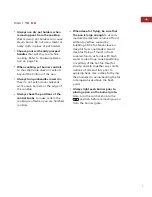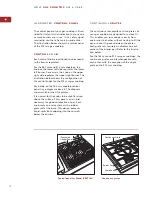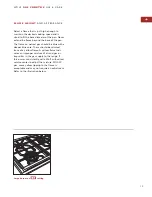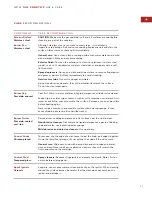
16
Use the following guidelines when selecting
cookware:
Griddles or open roasters that span two
burners are suitable, providing they are not
warped.
When a large pan is centered over a burner,
the diameter should not exceed 254 mm.
When using pans made of cast iron,
enameled steel or glass ceramic, or coated
with a nonstick finish, select lower flame
settings. High heat applied to such materi-
als will cause ”hot spots,” scorching and
burning.
Cover pans while cooking; covers improve
cooking efficiency. Water boils faster, using
less fuel, and the kitchen stays cooler.
Select high-sided (deep) pans rather than
ones with very wide bases and low sides.
High sides will minimize liquids boiling
over the pan.
Pans with oversize bases that extend
beyond the cooktop frame
should not
be
used. On
settings, heat may be
trapped beneath the pan, causing perma-
nent damage to the surface finish.
Use the front burners for larger pans. The
pans are easier to handle, especially when
hot.
Use a wok with a flat bottom.
W O L F
G A S C O O K T O P
U S E & C A R E
C O O K W A R E
S E L E C T I O N
For best results, we recommend medium- to
heavy-weight pans that have a flat base, metal
handle and a good-fitting cover.
Look for pans that are made of materials with
good heat conductivity, such as aluminum and
copper. These metals are sometimes found
”sandwiched” between the inner and outer
layers of the pan. If present, whether visible
from the outside or not, they aid in evenly
conducting heat.
















































